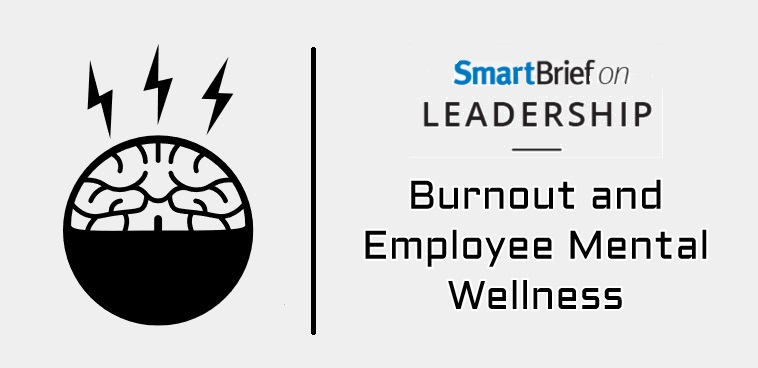Burnout at work is nothing new — Harvard Business Review was documenting it 40 years ago, after all. And many workplaces were paying attention to employee physical, mental and emotional wellness in recent years.
But the pandemic highlighted how important our sense of self and well-being are, and how our workday can impact every aspect of our life. Frankly, burnout got worse in 2020.
This primer is paired with our SmartSummit webinar “Living at work: Tackling burnout and supporting employee mental wellness.” But whether you prefer video or text, we have gathered some of our best content on this and the related issues of workplace mental health and employee wellness.
You’ll notice that some of these links are written well before COVID-19. Keep in mind that the pandemic was not the beginning of burnout, and a return to normal (or a “new normal”) won’t be the end of it.
Burnout at the office — and beyond
These articles sum up what burnout looks like at work, why it’s bad for people and organizations, and what some of the remedies are. John Baldoni in 2019 explored survey findings, and quoted a psychotherapist who said that “burnout is a form of self-neglect.” Michael Lee Stallard explores how people are affected by quality relationships, or a lack thereof. And Naphtali Hoff explores the burnout associated with teaching.
Some of the advice can be practiced by anyone, such as Julie Winkle Giulioni’s guide to “shutdown rituals” or Alaina Love’s advice for creating mindfulness-oriented routines. And I profiled the work that Stress & Resilience Institute founder Paula Davis has been doing to argue that teams are the starting point for combating burnout. Stephanie Peskett’s 2022 article also looks at team dynamics.
- “Burnout blues and what you can do to protect yourself,” by John Baldoni
- “The surprising way to protect yourself from burnout,” by Michael Lee Stallard
- “Preserving you: Preventing teacher burnout,” by Naphtali Hoff
- “5 strategies for combating WFH-based burnout,” by Julie Winkle Giulioni
- “How to practice mindful working,” by Alaina Love
- “Burnout’s a big problem. Start solving it through your team,” by James daSilva
- “Be the balm: Creating an anti-burnout culture,” by Elisabeth Hayes
- “3 strategies for helping leaders extinguish collective burnout,” by Stephanie Peskett
Loneliness, mental health and other wellness factors
Stallard has studied, written about and spoken about loneliness and connection for many years, and he sounded the alarm in SmartBrief years ago about the problem of loneliness — this during a time when we were free to move about the world.
Wellness is a broad category, and as such, we offer several angles below: how managers can help employees with mental well-being, how leaders can take care of their own wellness, and the HR and legal considerations.
Wellness is only one facet of strong workplaces, however, as Trust Across America-Trust Around the World founder Barbara Brooks Kimmel reminds us. I offer another view of leaders intervening in mental health by looking at how parks and recreation agencies help the communities they serve.
- “America’s loneliness epidemic: A hidden systemic risk to organizations,” by Michael Lee Stallard
- “Why we long for leaders who actually care about us,” by Michael Lee Stallard and Katharine P. Stallard
- “3 ways to support employees’ mental well-being,” by Jennifer V. Miller
- “What to do when leadership feels isolating and awkward,” by Art Petty
- “FAQ: Human resources and mental health accommodations,” by Catherine Guiles
- “Building a healthy workplace goes beyond ‘wellness,'” by Barbara Brooks Kimmel
- “How parks and rec can take the lead on mental health,” by James daSilva
Health care’s burnout crisis
SmartBrief health care editors have long covered this space, especially with the particular mental health and burnout challenges facing the profession.
- ” Healing the healers: How COVID-19 has ramped up the clinician burnout crisis,” by Doug Harris
- “How to address physician burnout (the right way),” by Kathryn Doherty
- “Changing the systems that burn out clinicians,” by Ellen Beck
- “What’s different about the stress clinicians are facing, and what can help,” by Tom Parks
James daSilva is the longtime editor of SmartBrief’s leadership newsletter and blog content. Contact him at @James_daSilva or by email.
If you enjoyed this article, sign up for SmartBrief’s free emails on HR and business transformation, among SmartBrief’s more than 200 industry-focused newsletters.
